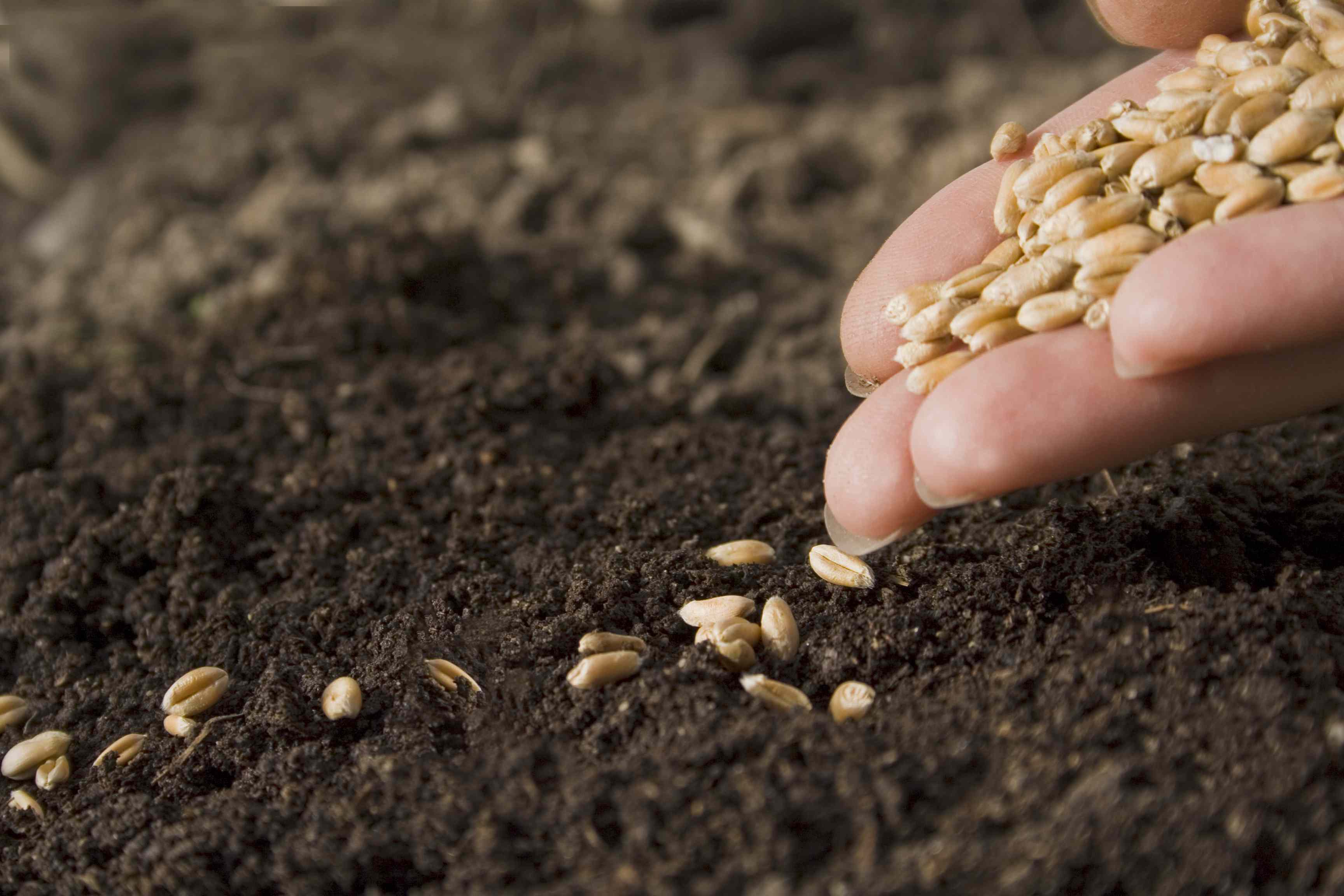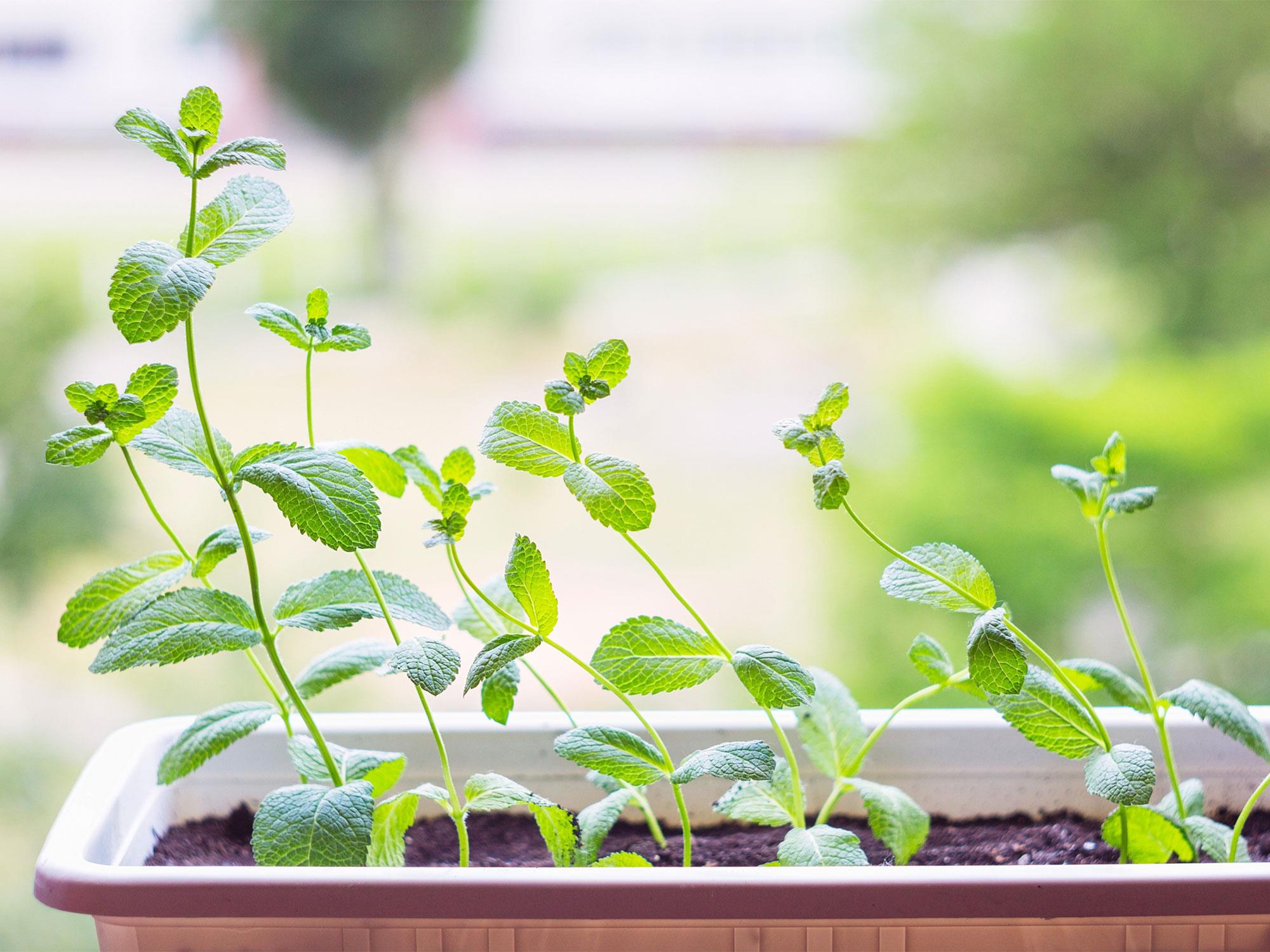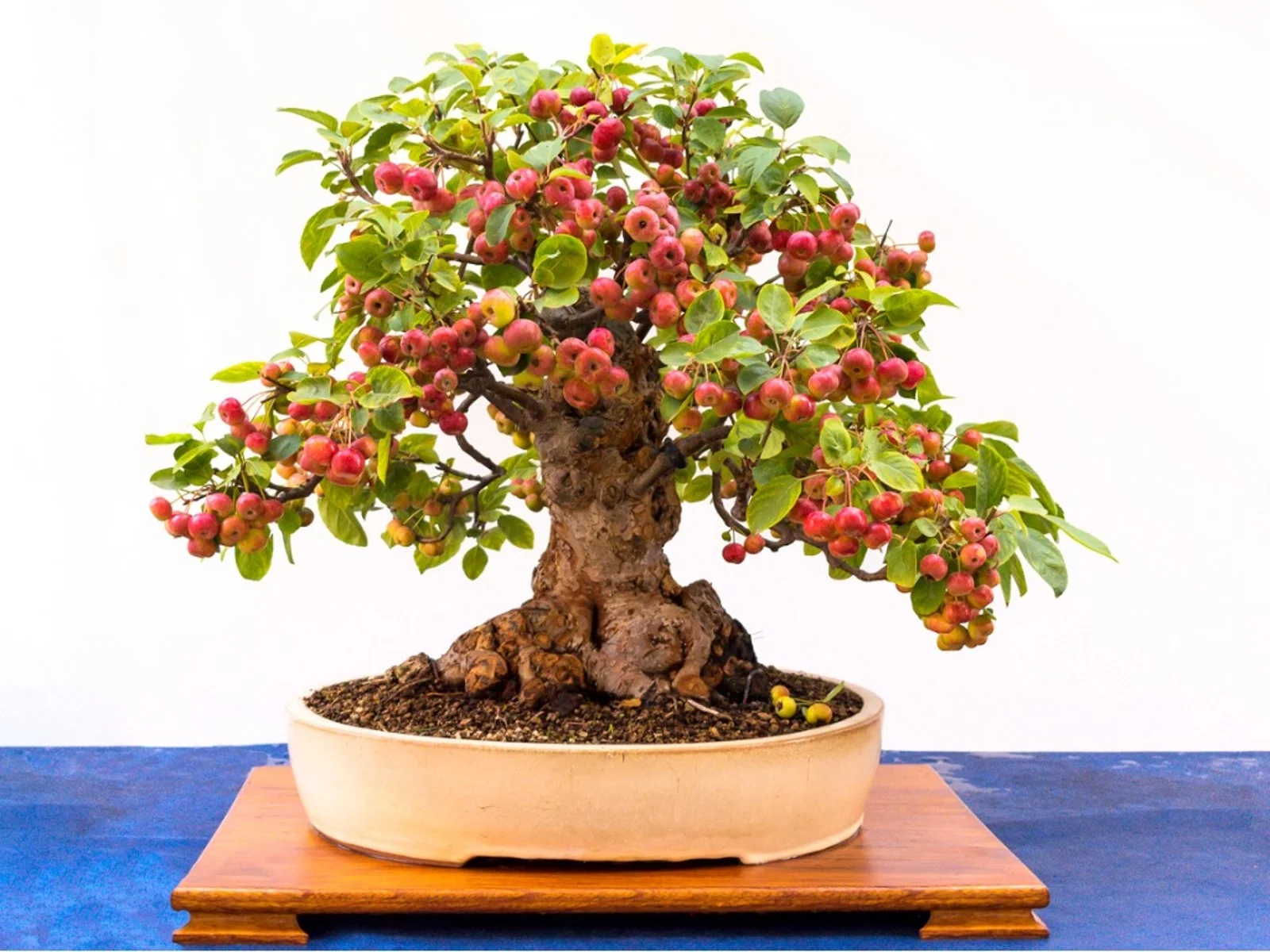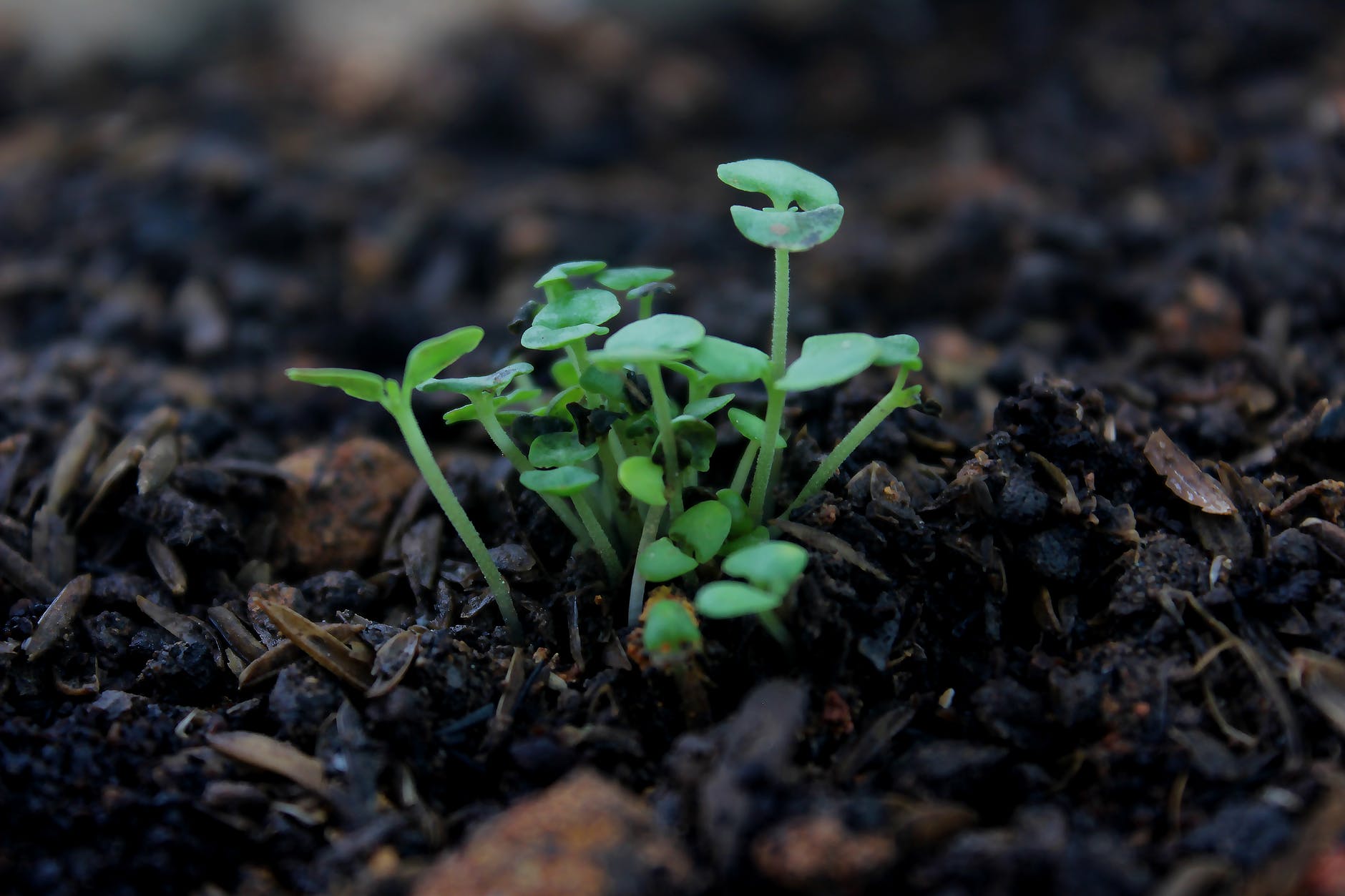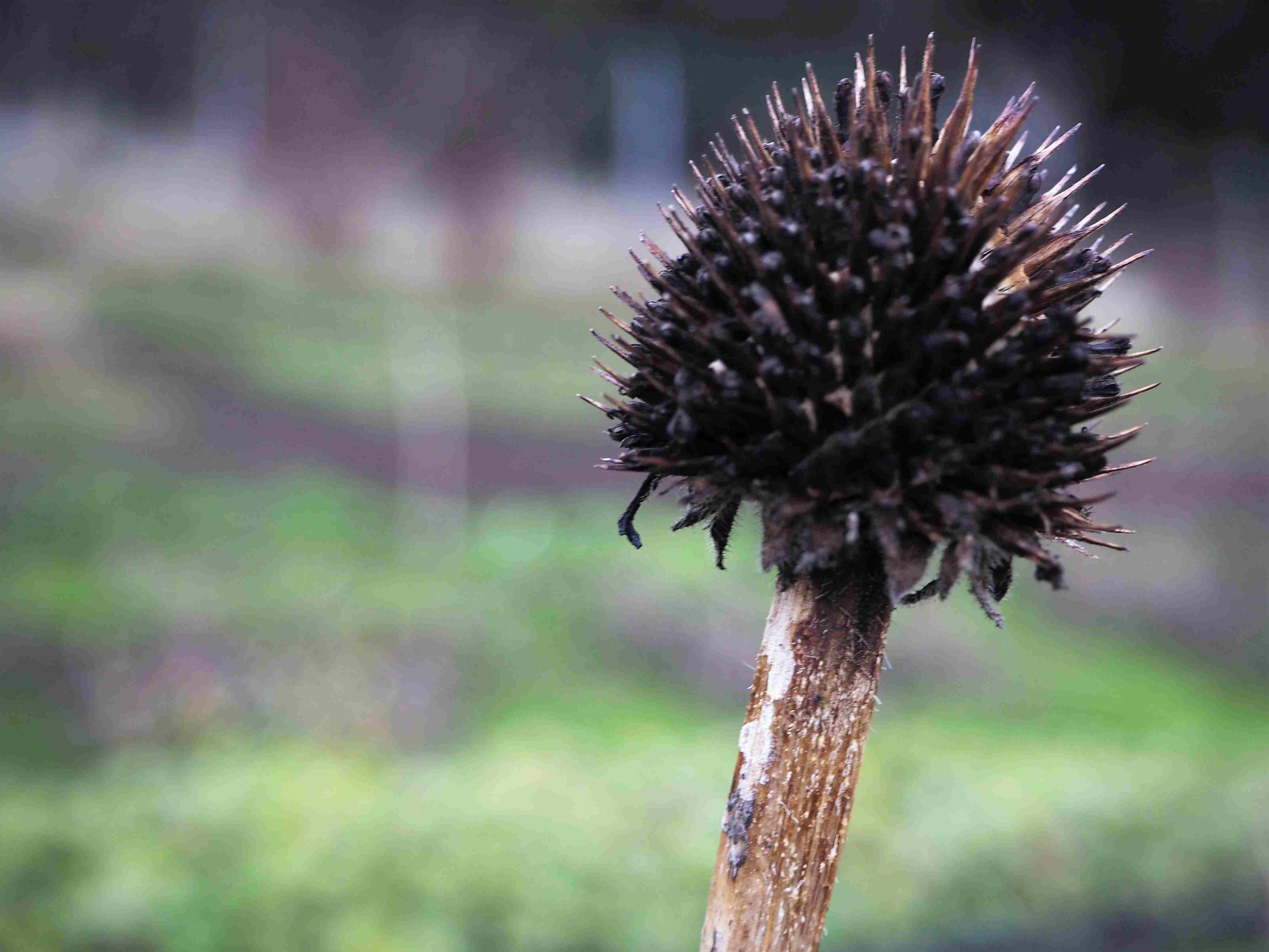Home>Types of Gardening>Ornamental Gardening>How To Plant Milkweed Seeds
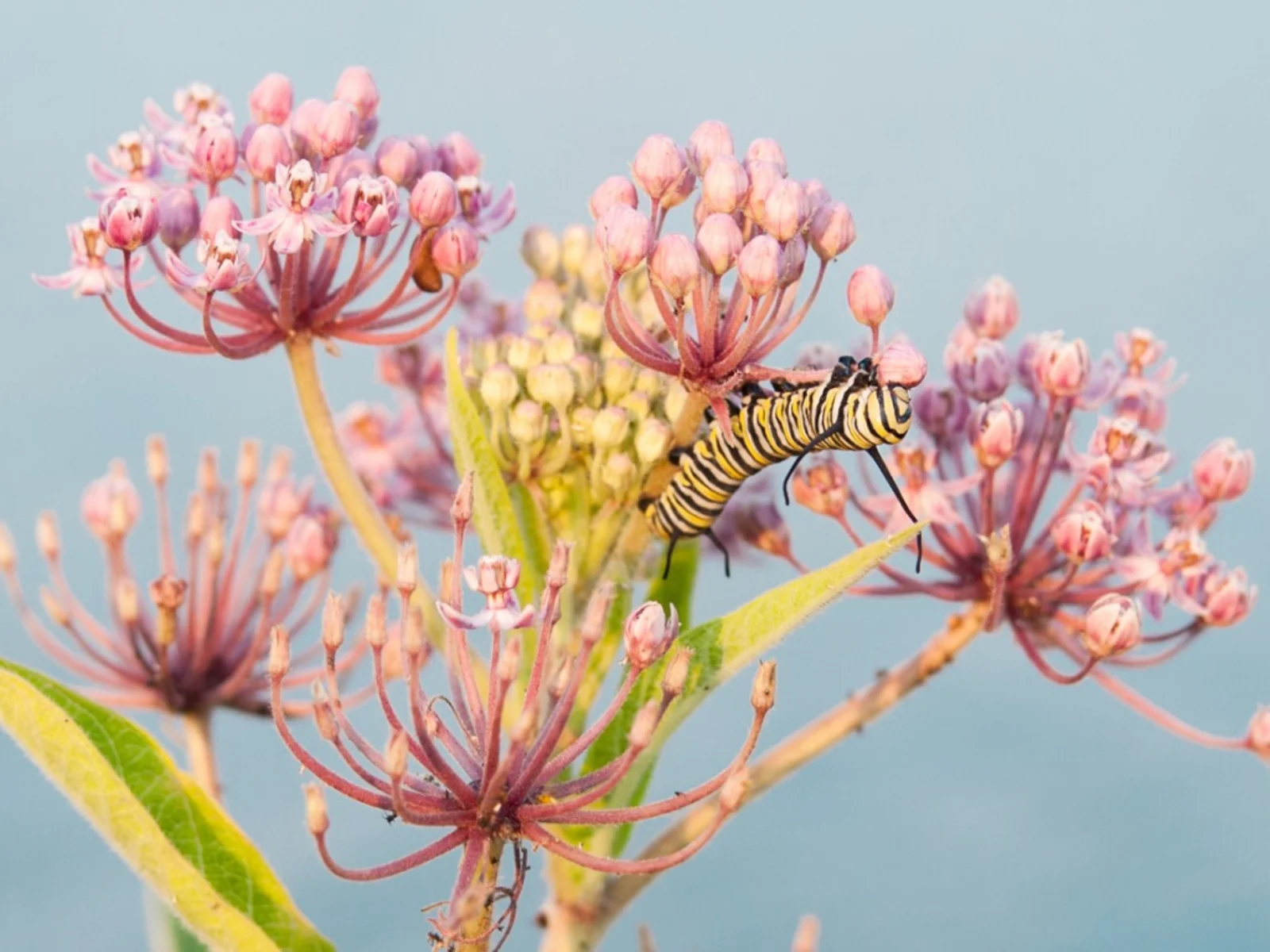

Ornamental Gardening
How To Plant Milkweed Seeds
Modified: February 6, 2024
Learn how to plant milkweed seeds for ornamental gardening. Step-by-step guide and tips for successful cultivation. Create a beautiful and wildlife-friendly garden.
(Many of the links in this article redirect to a specific reviewed product. Your purchase of these products through affiliate links helps to generate commission for Chicagolandgardening.com, at no extra cost. Learn more)
Table of Contents
Introduction
Welcome to the wonderful world of ornamental gardening! If you have a passion for adding beauty to your outdoor spaces, then you’re in the right place. In this article, we will explore the art of planting and growing milkweed seeds, a fascinating and beneficial addition to any garden.
Milkweed seeds are not only aesthetically pleasing but also serve a crucial purpose in supporting our ecosystem. As the primary host plant for monarch butterflies, milkweed plays a vital role in their life cycle. By creating a habitat for these magnificent creatures, we can contribute to their conservation efforts and witness the incredible transformation from egg to caterpillar to butterfly right in our own backyard.
But milkweed is not solely for the benefit of butterflies; it also attracts a variety of other pollinators like bees, wasps, and hummingbirds, enhancing the overall diversity and abundance of wildlife in your garden. So, whether you’re an avid gardener or new to the world of ornamental plants, planting milkweed seeds is a rewarding and enriching experience.
In this article, we will guide you through the process of choosing the right location, preparing the soil, planting the seeds, and caring for the milkweed plants. We will also discuss how to attract butterflies and pollinators, as well as how to deal with common pests and diseases that may affect milkweed. By the end of this article, you will have all the knowledge you need to create a thriving milkweed garden.
So, grab your gardening tools, roll up your sleeves, and let’s dive into the world of milkweed seeds!
Benefits of Milkweed Seeds
Planting milkweed seeds in your garden brings a multitude of benefits, both for the environment and for your enjoyment. Let’s explore some of the key advantages of incorporating milkweed into your ornamental gardening:
- Supports Monarch Butterflies: Milkweed is the primary host plant for monarch butterflies. By providing a habitat for these delicate creatures, you can help support their population and contribute to their conservation efforts.
- Attracts Pollinators: Milkweed flowers are a magnet for various pollinators, from bees and wasps to hummingbirds and butterflies. By planting milkweed seeds, you’ll create an oasis of nectar-rich blooms that will attract a diverse range of beneficial pollinators to your garden.
- Enhances Biodiversity: The presence of milkweed plants in your garden can increase the overall biodiversity of your outdoor space. By attracting different pollinators and insects, you’ll create a balanced ecosystem that supports the health and vitality of your plants.
- Creates a Beautiful Garden Display: Milkweed plants produce stunning and vibrant flowers that add a touch of beauty and elegance to your garden. With their unique shapes and colors, they make for eye-catching additions that can enhance any landscape design.
- Nurtures Native Plants: Milkweed is a native wildflower in many regions, making it an excellent choice for promoting native plant populations. By including milkweed seeds in your ornamental garden, you’ll be supporting the growth and preservation of local plant species.
- Provides Educational Opportunities: Milkweed gardens offer a wonderful learning opportunity for individuals of all ages. Whether it’s observing the life cycle of monarch butterflies or discovering the fascinating world of pollinators, planting milkweed seeds can spark curiosity and provide a hands-on learning experience.
With all these benefits, it’s clear why milkweed is a valuable addition to any ornamental garden. By sowing milkweed seeds, you’ll not only create a stunning display of flowers but also contribute to the conservation of monarch butterflies and support a vibrant ecosystem right in your own backyard.
Choosing the Right Location
When it comes to planting milkweed seeds, selecting the right location is crucial for the health and success of your plants. Here are a few factors to consider when choosing where to plant your milkweed:
- Sunlight Requirements: Milkweed is a sun-loving plant that thrives in full sun. Choose a location in your garden that receives at least six to eight hours of direct sunlight each day. Without adequate sunlight, the growth and blooming of the milkweed may be affected.
- Soil Quality: Milkweed grows best in well-draining soil. It can tolerate a range of soil types, including clay and sandy soil, but it prefers fertile soil that is rich in organic matter. Before planting, assess the soil drainage and consider amending it with compost or organic matter if needed.
- Water Accessibility: While milkweed is a drought-tolerant plant once established, it is essential to provide adequate water during its early growth stages. Ensure that the chosen location has access to a water source, or plan to provide regular watering until the plants are established.
- Space Availability: Consider the mature size of the milkweed plants when selecting a location. Depending on the species, milkweed can range from a foot tall to several feet in height and spread. Leave enough space between plants to accommodate their full growth and avoid overcrowding.
- Protection from Strong Winds: Milkweed plants can be susceptible to damage from strong winds, especially taller varieties. Choose a location that provides some shelter or consider using windbreaks, such as fences or other plants, to protect your milkweed from being damaged or uprooted.
- Proximity to other plants: While milkweed is a beautiful addition to your garden, it can be quite aggressive in its growth habit. To prevent it from overcrowding other plants, choose a location where it won’t compete for resources and space with other ornamental plants.
By carefully considering these factors, you can select the ideal location for your milkweed plants. Remember that milkweed is a perennial plant, so choosing a spot where it can establish itself and grow undisturbed for several years will ensure a thriving and flourishing milkweed garden.
Preparing the Soil
Preparing the soil properly is essential for creating a favorable environment for milkweed seeds to germinate and grow successfully. Here’s a step-by-step guide to help you prepare your soil for planting milkweed:
- Clear the area: Start by clearing the area where you plan to plant milkweed. Remove any weeds, rocks, or debris that may obstruct the growth of the seeds or compete for resources.
- Loosen the soil: Use a garden fork or a tiller to loosen the soil to a depth of about 6 to 8 inches. This will help improve soil aeration and drainage, allowing the milkweed roots to establish themselves more easily.
- Amend the soil: If your soil is heavy clay or lacks organic matter, consider adding compost or well-rotted manure to the planting area. These organic amendments will enrich the soil, improve its texture, and provide essential nutrients for the milkweed plants.
- Test the soil pH: Milkweed generally prefers a slightly acidic to neutral soil pH between 6.0 and 7.5. Use a soil testing kit to determine the pH of your soil. If necessary, adjust the pH by adding lime to raise it or sulfur to lower it, following the recommended guidelines.
- Level the soil: After amending the soil, use a rake to level the surface and create a smooth planting bed. This will provide an even and consistent environment for the milkweed seeds to germinate.
- Water the soil: Before planting the milkweed seeds, thoroughly water the soil to ensure that it is evenly moist. This will promote better seed germination and help the roots establish themselves once the seeds sprout.
By following these steps, you will prepare the soil to provide a suitable growing environment for your milkweed plants. Remember that healthy soil is the foundation for healthy plants, so investing time and effort in soil preparation will greatly contribute to the overall success of your milkweed garden.
Planting Milkweed Seeds
Now that you have prepared the soil, it’s time to plant your milkweed seeds. Follow these steps to ensure proper planting and give your seeds the best chance of successful germination:
- Select the right time: The optimal time to plant milkweed seeds varies depending on your location and the specific species of milkweed. In general, it is best to sow the seeds in the spring when the soil has warmed up and there is no longer a risk of frost.
- Sow the seeds: Place the milkweed seeds on the surface of the soil, spacing them about 1 to 2 inches apart. Gently press the seeds into the soil using your fingers or the back of a garden tool, ensuring they are in good contact with the soil but not buried too deep.
- Water thoroughly: After sowing the seeds, water the area gently but thoroughly. Be careful not to wash away the seeds or create standing water. Keep the soil consistently moist but not waterlogged during the germination period.
- Provide consistent moisture: Keep a close eye on the moisture levels of the soil and water as needed. Milkweed seeds require consistent moisture to germinate, so make sure the soil does not dry out completely. Consider using a misting nozzle or a soaker hose to provide an even and gentle irrigation.
- Protect the seeds: To protect the seeds from birds or other animals, you can cover the planting area with a thin layer of straw or mulch. This will help retain moisture and provide some insulation as the seeds germinate and the seedlings emerge.
- Monitor for germination: Keep a close eye on the planting area for signs of germination. Depending on the species, milkweed seeds typically take anywhere from a few days to a few weeks to germinate. Once the seedlings emerge, thin them out if needed, leaving the strongest and healthiest plants.
By following these planting guidelines, you can give your milkweed seeds the best start and increase the chances of successful germination. Patience is key, as milkweed seeds can sometimes take a bit longer to sprout, but with proper care and attention, you’ll soon have young milkweed plants growing in your garden.
Watering and Mulching
Watering and mulching are essential practices to ensure the health and vitality of your milkweed plants. Proper moisture management and the use of mulch can help conserve water, suppress weed growth, and maintain optimal soil temperature. Follow these guidelines for watering and mulching your milkweed:
- Establishment period: During the first few weeks after planting your milkweed, it is crucial to keep the soil consistently moist. Water the plants deeply at least once a week, saturating the soil to a depth of a few inches. Adjust the frequency and amount of watering based on weather conditions and the moisture needs of the plants.
- Avoid overwatering: While milkweed requires regular moisture, it is important to avoid overwatering. Ensure proper soil drainage and allow the top few inches of soil to dry out slightly between waterings. Overly wet soil can lead to root rot and other moisture-related issues.
- Mulch the soil: Applying a layer of organic mulch around the base of your milkweed plants helps retain moisture and suppress weed growth. Use materials such as straw, wood chips, or shredded bark, and spread a layer about two to three inches thick. Keep the mulch a few inches away from the stem of the plants to prevent excessive moisture and potential rotting.
- Replenish mulch as needed: Over time, organic mulch decomposes and may need replenishing to maintain its effectiveness. Check the layer of mulch regularly and add more as necessary to maintain a consistent thickness. This will help conserve moisture, regulate soil temperature, and provide a natural weed barrier.
- Water deeply and infrequently: Once your milkweed plants are established, you can gradually reduce the frequency of watering. Instead, water deeply and less often, aiming to saturate the soil to a depth of six to eight inches. This encourages the plants to develop deep, strong roots, making them more resilient to drought conditions.
- Monitor plant health: Regularly inspect your milkweed plants for signs of moisture stress or overwatering. Wilting, yellowing leaves, or stunted growth may indicate an issue with watering. Adjust your watering practices accordingly to ensure the plants receive just the right amount of moisture.
By following these watering and mulching practices, you can create a consistently moist and well-regulated environment for your milkweed plants. This will contribute to their overall health and vigor, allowing them to thrive and provide a welcoming habitat for butterflies and other pollinators.
Caring for Milkweed Plants
Caring for milkweed plants involves providing the right conditions and ongoing maintenance to ensure their optimal growth and vitality. Here are some key aspects of caring for milkweed plants:
- Regularly monitor soil moisture: Milkweed plants prefer moist but not waterlogged soil. Regularly check the moisture levels by sticking your finger a few inches into the soil. If it feels dry, water the plants deeply. Be mindful of any prolonged dry spells and adjust your watering schedule accordingly.
- Apply balanced fertilizer: Milkweed generally doesn’t require heavy fertilization. However, if the plants show signs of nutrient deficiencies, such as yellowing leaves or stunted growth, you can apply a balanced organic fertilizer in moderation. Follow the manufacturer’s instructions for application rates and timing.
- Support taller varieties: Some milkweed species, such as the common milkweed (Asclepias syriaca), can grow quite tall and may benefit from additional support. Use stakes or plant supports to prevent the plants from bending or toppling over, especially during heavy rainfall or windy conditions.
- Regularly weed the area: Keep the area around your milkweed plants free from weeds, which can compete for resources and impact their growth. Regular weeding helps maintain a clean and weed-free environment for the milkweed plants to thrive.
- Monitor for pests: Keep an eye out for common pests that may affect milkweed, such as aphids and milkweed bugs. If you notice any pest infestations, take appropriate measures to control them, such as manually removing the insects or using organic pest control methods.
- Encourage natural predators: Instead of relying solely on chemical pesticides, encourage natural predators such as ladybirds, lacewings, and parasitic wasps to help control pest populations. Maintaining a diverse and balanced ecosystem in your garden will naturally keep pests in check.
- Observe butterfly activity: Take the time to observe and appreciate the butterfly activity around your milkweed plants. Monitor for eggs, caterpillars, and chrysalises to witness the different stages of the butterfly life cycle. This hands-on experience can be both educational and rewarding.
- Practice good garden hygiene: To prevent the spread of diseases, remove any dead or decaying plant material from the area around your milkweed plants. Good garden hygiene helps maintain a clean and healthy environment, reducing the risk of disease transmission.
By providing consistent care and attention to your milkweed plants, you can create a thriving habitat for butterflies and other pollinators. Remember to monitor soil moisture, address any nutrient deficiencies, support taller varieties, control weeds and pests, and appreciate the beauty and wonder of the butterfly life cycle in your garden.
Attracting Butterflies and Pollinators
Creating a garden that attracts butterflies and pollinators is not only visually stunning but also beneficial for the ecosystem. By incorporating milkweed plants and other pollinator-friendly flowers, you can transform your garden into a haven for these beautiful creatures. Here are some tips for attracting butterflies and pollinators:
- Plant milkweed: As the primary host plant for monarch butterflies, milkweed is essential for their survival. Include different species of milkweed, such as common milkweed (Asclepias syriaca) or butterflyweed (Asclepias tuberosa), to provide food and habitat for monarch caterpillars.
- Choose nectar-rich flowers: Select a variety of nectar-rich flowers that bloom at different times throughout the growing season. This will provide a continuous food source for adult butterflies and other pollinators. Consider flowers like coneflowers, black-eyed Susans, bee balm, and zinnias.
- Include diverse plant species: Incorporate a diverse range of plants with different colors, shapes, and heights to attract a wide array of butterfly species. Different butterflies have specific preferences for the types of flowers they feed on and lay their eggs on, so offering a variety of options will increase your garden’s overall attractiveness.
- Provide host plants: In addition to milkweed, include other host plants that caterpillars of different butterfly species rely on for food and shelter. For example, parsley attracts swallowtail butterflies, while dill is a favorite of black swallowtails. Research the specific host plants for the butterflies native to your region.
- Provide water sources: Butterflies and other pollinators also need a water source. Create shallow dishes or include a small bird bath in your garden with shallow water, adding rocks or pebbles for them to perch on safely. Keeping the water fresh and clean is important to attract and sustain these creatures.
- Minimize pesticide use: Reduce or eliminate the use of pesticides in your garden. Chemical pesticides can harm butterflies, bees, and other pollinators. Instead, opt for natural pest control methods and encourage natural predators to maintain a balance in your garden ecosystem.
- Create shelter: Provide shelter and resting spots for butterflies by including dense shrubs, tall grasses, and butterfly houses. These structures offer protection from wind and predators, creating a welcoming environment for butterflies to stay and rest in your garden.
- Practice continuous flowering: To maintain a vibrant habitat for butterflies, aim to have flowers blooming throughout the growing season. This provides a consistent food source and encourages butterflies to visit and stay in your garden for longer periods.
By implementing these practices, you can create a garden that is not only visually appealing but also supports the life cycle of butterflies and other pollinators. Watching these beautiful creatures fluttering around and pollinating your flowers is a delightful experience that adds an extra dimension of joy to your outdoor space.
Dealing with Pests and Diseases
While milkweed plants are generally resilient, they can occasionally face issues with pests and diseases. It is important to address these problems promptly to ensure the health and vitality of your milkweed. Here are some strategies for dealing with common pests and diseases:
- Aphids: These tiny insects can attack milkweed plants, sucking sap from the leaves and stems. To control aphids, you can manually remove them by spraying a strong stream of water or by using insecticidal soap. Ladybugs and lacewings are natural predators that feed on aphids, so attracting these beneficial insects to your garden can also help keep the population in check.
- Milkweed Bugs: Milkweed bugs are orange and black insects that feed on milkweed seeds and stems. If their presence becomes excessive, you can manually remove them or use a vacuum cleaner to collect and dispose of them. Regular monitoring and early intervention are key to preventing large outbreaks.
- Milkweed Rust: This fungal disease appears as orange or yellow rust-like spots on the leaves, eventually causing them to yellow and wither. To prevent the spread of milkweed rust, remove and destroy infected plant parts. Avoid overhead watering and ensure good air circulation around the plants. If necessary, apply a fungicide registered for use on ornamental plants, following the instructions carefully.
- Milkweed Mosaic Virus: This viral disease causes distorted growth, mottled leaves, and stunted plants. Unfortunately, there is no cure for mosaic virus. If you notice signs of infection, remove and destroy the affected plants immediately to prevent the spread of the virus to healthy plants. Disinfect gardening tools to avoid transmitting the virus to other areas of your garden.
- Root Rot: Poor drainage or overwatering can lead to root rot, causing the roots to become brown and mushy. To prevent root rot, ensure the soil has good drainage and avoid overwatering. If root rot is present, it is best to remove and discard the affected plant to prevent the spread of the disease to healthy plants.
- Weeds: Weeds can compete with milkweed plants for resources and nutrients. Regularly remove weeds from the vicinity of your milkweed plants to reduce competition and promote their growth. Consider using mulch or other weed control methods to suppress weed growth.
Remember that prevention and early intervention are vital in addressing pests and diseases. Practicing good garden hygiene, providing proper plant care, and monitoring for any signs of trouble will help keep your milkweed plants healthy and thriving. By taking these proactive measures, you can reduce the risk of widespread damage and enjoy a garden filled with beautiful and vibrant milkweed plants.
Harvesting Milkweed Seeds
Harvesting milkweed seeds allows you to collect and propagate new plants while supporting the conservation of these fascinating wildflowers. Follow these steps to harvest milkweed seeds effectively:
- Timing: Wait until the milkweed pods have fully ripened before harvesting the seeds. The pods will turn brown or yellowish and begin to split open, revealing the pointed seeds with their silky fibers.
- Gather the pods: Carefully cut the milkweed pods from the plant using clean pruning shears or scissors. Place them in a basket or paper bag, being cautious not to lose any seeds.
- Drying the pods: Allow the harvested pods to dry in a well-ventilated area. Hang them upside down or spread them out on a screen or tray. Make sure there is enough airflow around the pods to prevent mold or rot. It may take a few weeks for the pods to fully dry.
- Extracting the seeds: Once the pods are dry, gently open them to reveal the seeds. The seeds are attached to silky fibers known as pappus. Separate the seeds from the fibers by carefully rubbing the pods between your fingers or rolling them in your hands. This will help release the seeds while removing the fibers.
- Storing the seeds: Once you have extracted the seeds, store them in a cool, dry place in an airtight container. You can use small envelopes or glass jars. Be sure to label the container with the date and the milkweed species for future reference.
- Propagation: To grow new milkweed plants from the harvested seeds, sow them in well-prepared soil in your garden or in containers. Follow the planting instructions specific to the milkweed species you are propagating, including the recommended planting depth and spacing. Keep the soil consistently moist until the seeds germinate.
- Sharing and conservation: Consider sharing your milkweed seeds with friends, neighbors, or local gardening groups. By spreading the seeds, you can contribute to the conservation of milkweed and support the habitat for butterflies and other pollinators in your community.
Harvesting milkweed seeds not only allows you to expand your milkweed garden but also offers an opportunity to contribute to the conservation of these important plants. By following these steps and exercising patience and care, you can make the most of the seeds and continue to enjoy the beauty and benefits of milkweed in your garden.
Conclusion
Ornamental gardening with milkweed plants can be a rewarding and enriching experience. By incorporating milkweed seeds into your garden, you not only enhance the beauty of your outdoor space but also contribute to the conservation of monarch butterflies and other pollinators.
Throughout this article, we have explored the benefits of milkweed seeds, from supporting the life cycle of butterflies to attracting a diverse range of pollinators. We’ve discussed the importance of choosing the right location, preparing the soil, and properly planting the milkweed seeds. We’ve also touched on essential aspects such as watering, mulching, caring for the plants, and dealing with pests and diseases.
Remember to create a habitat that attracts butterflies and other pollinators by incorporating a variety of nectar-rich flowers and providing suitable host plants. Pay attention to the specific needs of milkweed plants, including their preference for full sun and well-draining soil.
By following these guidelines and taking proactive steps, you can create a vibrant and sustainable milkweed garden. Witnessing the transformation of caterpillars into butterflies and the flurry of activity from bees, wasps, and hummingbirds will be a delight for both you and any visitors to your garden.
Lastly, don’t forget the value of propagating and sharing milkweed seeds to encourage the growth and preservation of these important plants. Whether you’re a seasoned gardener or new to the world of ornamental gardening, planting milkweed seeds is a wonderful way to contribute to the health of our environment while enjoying the beauty of nature right in your own backyard.




